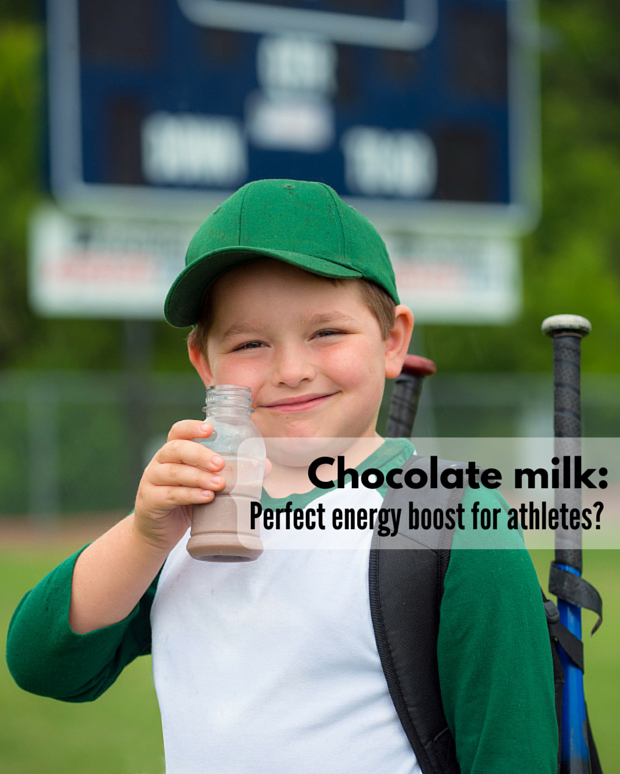Toward the end of “Anchorman,” a visibly fatigued and overheated Ron Burgundy (Will Ferrell) takes a big chug from a carton of milk and laments, “Milk was a bad choice.”
But is it really? The dairy industry is pushing milk, specifically chocolate milk, as a great recovery drink for athletes, replenishing lost protein and carbohydrates, among other benefits. They’ve enlisted the help of popular athletes like Kevin Love of the NBA’s Cleveland Cavaliers and Kelley O’Hara of the World Cup champion USA women’s national soccer team.
How much post-workout chocolate milks should you drink?
Their website, Built with Chocolate Milk, boasts an eight-ounce serving of low-fat chocolate milk provides nine essential nutrients, including protein, vitamin A, vitamin D, niacin (vitamin B3), riboflavin (B2), potassium, calcium, phosphorus and vitamin B12. Protein is beneficial in building lean muscle, while electrolytes like calcium, potassium, magnesium and sodium help retain fluid and restore what the body sweats out.
Why chocolate milk as opposed to regular milk? Because chocolate has twice the carbs and protein of plain.
So, is it really effective?
And a study by Joel Stager, an Indiana University kinesiology professor and director of the Counsilman Center for the Science of Swimming, found chocolate milk benefitted recovery as well as or better than traditional sports drinks like Gatorade, measured by how subjects (nine healthy, non-smoking athletes) performed in a second exercise session on the same day.
A much less-scientific study, involving one middle-aged, no-longer-as-athletic-as-he-thinks male ““ OK, it was me ““ also produced promising results. After 90 minutes of moderate intensity full-court basketball, I decided to forego the usual sports drink for 12 ounces of chocolate milk. Two hours later, I did some moderate-intensity swimming (ignoring my daughters’ moderate-intensity lobbying for money for the snack bar).
My experience: less muscle fatigue and more energy than usual.
Again, while that’s hardly scientific, if you like chocolate milk — relatively inexpensive and readily available — it’s worth keeping in mind. As a league tennis player whose postseason sometimes involves two singles matches in a four-hour time frame, I certainly will.
Another thing to keep in mind: the benefits of chocolate milk don’t come without some cost in terms of fat and calories, so you may want to adjust the rest of your dietary day accordingly. Here’s a sampling of some options and their content (all values based on eight-ounce servings):
- KROGER CHOCOLATE LOWFAT MILK:
- Calories: 180 (fat calories 25)
- Total fat: 2.5 grams
- Cholesterol: 10 mg
- Total carbs: 33 g
- Protein: 9 g
- TRUMOO CHOCOLATE
- Calories: 140 (fat calories 25)
- Total fat: 2.5 g
- Cholesterol: 15 mg
- Total carbs: 19 g
- Protein: 8 g
- NESQUIK DOUBLE CHOCOLATE
- Calories: 170 (fat calories 25)
- Total fat: 2.5 g
- Cholesterol: 15 mg
- Total carbs: 30 g
- Protein:8 g
- HORIZON ORGANIC CHOCOLATE
- Calories: 150 (fat calories 25)
- Total fat: 2.5 g
- Cholesterol: 10 mg
- Total carbs: 24 g
- Protein: 8 g
- SHAMROCK FARMS ROCKIN’ REFUEL
- Calories: 200 (fat calories 25)
- Total fat: 3 g
- Cholesterol: 20 mg
- Total carbs: 32 g
- Protein: 13 g

